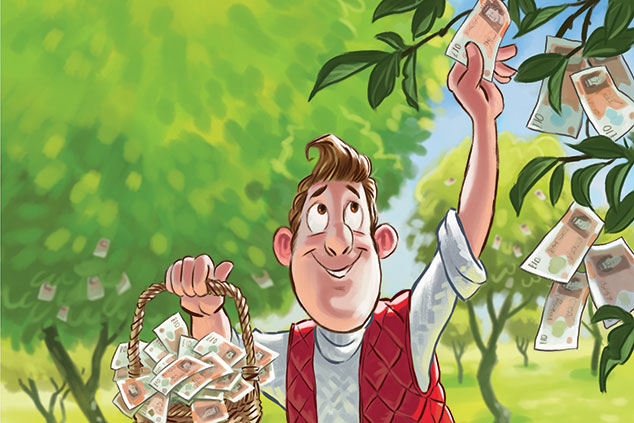
You can’t expect to find a magic money tree, but if you are a wealthier investor, then adding a forest to your portfolio could boost your returns – and it’s environmentally friendly too. David Prosser explores the options.
In turbulent political and economic times, many investors are attracted to physical, tangible assets that promise some sort of protection against inflation, upheaval in the financial system, or political change (or often, all three at once). Gold is one such “real asset”; property is another. But while most of us probably have some exposure to property, and many MoneyWeek readers will already own gold, there’s one “real” asset you perhaps haven’t considered – forestry. Investing in woodland might sound like a hassle (it can be), or only for those who are aiming to pass their wealth to the next generation (it certainly has its uses on that front). But if you are looking to diversify your portfolio and plan to invest for the long run, it’s an asset class that you shouldn’t ignore.
Woodland covers around 13% of the UK, according to government statistics – the best part of 3.2 million hectares. It’s also attracting growing interest from institutional investors. These include the Church Commissioners, which manages the Church of England’s investments, and has – on its behalf – built a portfolio of forestry worth around £250m. Forestry can provide both long-term income and capital growth. The income is generated by the sale of the timber felled each year – the biggest customers come from the construction industry, but the paper and packaging business is a significant source of demand too. Growth, meanwhile, is driven by the rising capital value of the asset over time – as timber prices rise, so do the value of the forests producing it.
What makes forestry particularly interesting though is that it tends to move in a different way from other assets – so adding it to your portfolio should help you to reduce the risk of volatility without damaging your returns. “Investors like the fact that it is asset backed, low volatility and uncorrelated to mainstream listed equities and bonds, which makes it an excellent source of diversification,” says Anthony Crosbie Dawson, an investment manager at Gresham House, owner of FIM, the country’s biggest forestry manager. “Whatever else is going on in the world, whether it’s Trump or Brexit, these trees go on growing and therefore adding more value.” Indeed, between 2007 and 2017, according to Gresham House figures, UK timberland returns correlated most closely with the UK inflation rate (and even then, the correlation is just over 0.5 – significant, but hardly moving in lockstep). The correlation with UK equities, meanwhile, was virtually non-existent.
Tax breaks grow on trees
The past performance (which is, of course, no guide to the future, though it’s the only one we have) of forestry has been impressive. The Investment Property Databank (IPD) UK Forestry index, which measures the performance of more than 100 plantations of Sitka spruce (the main source of UK timber), has delivered average returns of 11.6% and 9.2% a year over the past ten and 25 years respectively. That’s well ahead of both equities and bonds over the same period. Moreover, for individual UK investors in commercial forestry, there’s an additional bonus in the form of incentives that protect returns from the taxman. There’s no income tax to pay on timber revenue and no capital-gains tax (CGT) on gains in the value of your timber – any gains in the value of your land would be taxable, but it’s the wood that accounts for most of the capital growth.
Subscribers can read it in the digital edition or app